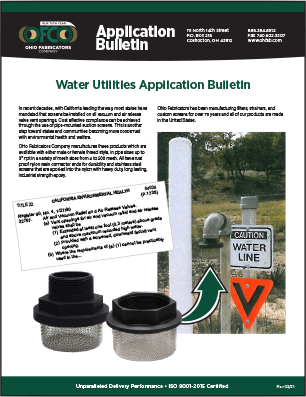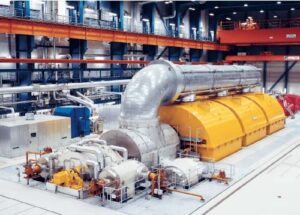If there is an area that, generally speaking, people do not think of very much when designing and maintaining a fluid power system, it’s filtration. It isn’t necessarily carelessness; it is simply a matter of something that is not given priority. However, it may be one of the most important areas in a system. Think about it for a moment—here you are with a $15,000,000 power system, or even a $5,000 car engine, the inlet filter plugs (if there is one), the pump cavitates, and there goes the system. The pump, the heart of all power systems, is destroyed—all because of a simple, inexpensive, suction filter, which was not maintained, or maybe one never existed in the first place. Too much resistance to flow creates considerable power loss and ineffectual operation, and sometimes destruction.

Filters are relatively inexpensive and well worth the investment. For the cost of a filter it may mean the difference between a good operation and a poor operation. In this day and age when we all want to get “more bang for the buck”, a properly maintained system, whether it be $15,000,000 power system, a $5,000 car engine, or a $150 lawn mower, is a must. That doesn’t only mean the filtration end of it either. All components in the system are important as well, and need to be protected and maintained. They all work as a team in getting the job done effectively, both in cost and in performance. Remember, if there is an area of filtration that is not very clear to you or if you have any questions concerning applications, contact a filtration specialist. After all is said and done, manufacturers, distributors, dealers, and users are all on the same side.
 Cross Reference Guide
Cross Reference Guide
 Cross Reference Guide
Cross Reference Guide
 Filtration has come a long way since the beginning of time. It goes all the way back to ancient times. The Egyptians used to strain their grape juice through fabric. Even the use of filters to purify water and make it fit for consumption is not new. Historical records dating back before the birth of Christ have many references to making water drinkable. The Bible has many references to water treatment and supply. Egyptians heated, then filtered their water through sand. Ancient Indo-European records refer to placing water in copper kettles, heating it, exposing it to sunlight, and running the water through charcoal. In ancient Rome around 300 B.C, water provided by the aqueducts was used not only for drinking but for bathing. Primitive filtration systems were used in the form of settling tanks to remove debris from the water to help purify it. So you see, the idea of filtration goes back a long, long way.
Filtration has come a long way since the beginning of time. It goes all the way back to ancient times. The Egyptians used to strain their grape juice through fabric. Even the use of filters to purify water and make it fit for consumption is not new. Historical records dating back before the birth of Christ have many references to making water drinkable. The Bible has many references to water treatment and supply. Egyptians heated, then filtered their water through sand. Ancient Indo-European records refer to placing water in copper kettles, heating it, exposing it to sunlight, and running the water through charcoal. In ancient Rome around 300 B.C, water provided by the aqueducts was used not only for drinking but for bathing. Primitive filtration systems were used in the form of settling tanks to remove debris from the water to help purify it. So you see, the idea of filtration goes back a long, long way. Enough of the history lesson in filtration. The development of science through the ages has brought us to the point that we not only filter solid particles but even molecules. Now that is getting pretty scientific! Just so you have a basic understanding of the relative sizes of particles, the human eye can see no smaller than 40 microns, human hair averages 50-70 microns in diameter, a grain of table salt is about 100 microns, white blood cells are 25 microns, red blood cells are 8 microns, and most bacteria (cocci) is about 2 microns. Now that’s small! This is all fine and dandy and might come in handy during a Trivial Pursuit™ game, but how does it relate to the filtration of fluids in a multi-million dollar system?
Enough of the history lesson in filtration. The development of science through the ages has brought us to the point that we not only filter solid particles but even molecules. Now that is getting pretty scientific! Just so you have a basic understanding of the relative sizes of particles, the human eye can see no smaller than 40 microns, human hair averages 50-70 microns in diameter, a grain of table salt is about 100 microns, white blood cells are 25 microns, red blood cells are 8 microns, and most bacteria (cocci) is about 2 microns. Now that’s small! This is all fine and dandy and might come in handy during a Trivial Pursuit™ game, but how does it relate to the filtration of fluids in a multi-million dollar system?